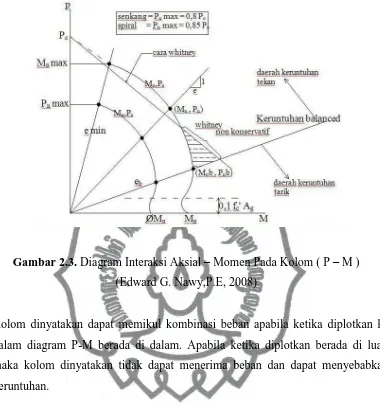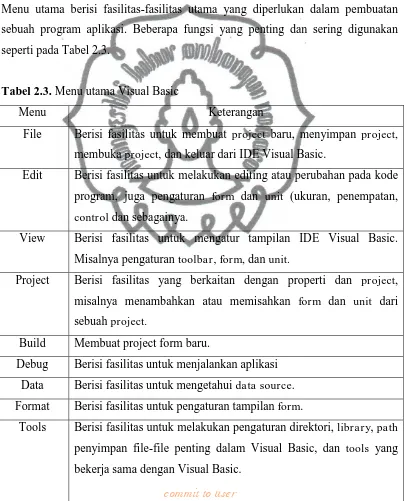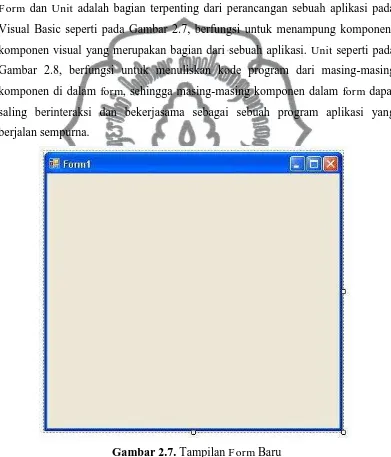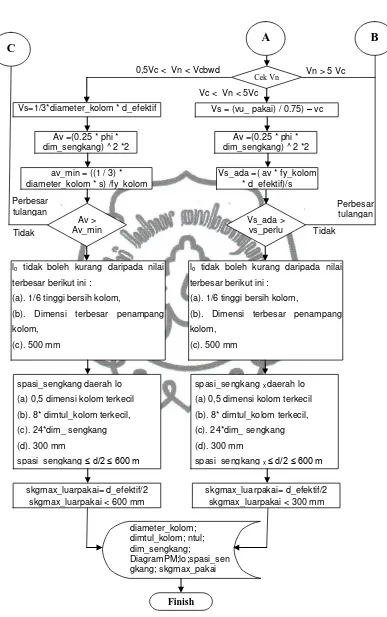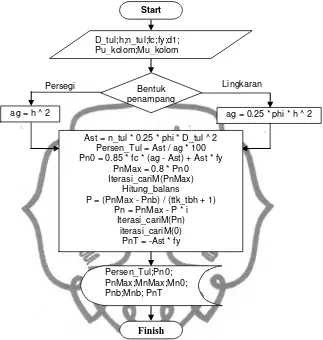Informasi Dokumen
- Penulis:
- Setyo Purnomo Y
- Pengajar:
- Bapak Agus Setiya Budi, ST, MT
- Bapak Ir. Sofa Marwoto
- Bapak Ir. Agus Supriyadi, MT
- Setiono, ST, MSc
- Sekolah: Sebelas Maret University
- Mata Pelajaran: Civil Engineering
- Topik: Calculation of Seismic Reinforced Concrete Structure With Visual Basic Programming Languages
- Tipe: thesis
- Tahun: 2010
- Kota: Surakarta
Ringkasan Dokumen
I. INTRODUCTION
This section provides an overview of the importance of concrete structures in Indonesia, particularly in earthquake-prone areas. It highlights the necessity for accurate and efficient calculation programs for reinforced concrete structures to ensure safety and compliance with regulations. The introduction sets the stage for the development of a Visual Basic program designed to calculate seismic resistance in concrete structures, emphasizing the need for innovation in civil engineering practices.
1.1. Background
The background outlines the advancements in computer technology and its application in civil engineering. It discusses the vulnerability of structures to seismic activity and the importance of designing earthquake-resistant buildings. The section emphasizes the need for engineers to develop tailored software solutions to enhance calculation accuracy and efficiency in structural design.
1.2. Problem Formulation
This subsection articulates the central problem of developing an independent calculation program for earthquake-resistant concrete structures. It highlights the gap in existing software solutions and the necessity for engineers to create customized tools that can perform these calculations effectively.
1.3. Research Limitations
The limitations section delineates the specific scope of the research, focusing on the design of rectangular beams and columns within seismic zones 3 and 4, following the SNI standards. This clarity helps to narrow down the focus of the program development and ensures that the research remains manageable and relevant.
1.4. Research Objectives
The objectives of the research are outlined, emphasizing the goal of creating a self-sufficient engineering program that can expedite the calculation process for reinforced concrete structures. This section serves to clarify the intended outcomes and the practical applications of the developed software.
1.5. Research Benefits
The benefits section discusses the potential advantages of the research, including improved efficiency in structural analysis and enhanced understanding of earthquake-resistant design principles among engineering students. It highlights the educational value of developing such a program for future civil engineers.
II. LITERATURE REVIEW AND THEORETICAL FRAMEWORK
This section reviews the existing literature related to concrete structures and seismic design principles. It establishes the theoretical basis for the program's development, discussing various methods and standards relevant to the design of earthquake-resistant structures.
2.1. Literature Review
The literature review emphasizes the critical role of concrete in construction projects in Indonesia. It discusses the unique challenges posed by the country's seismic activity and the necessity for engineers to master concrete design principles to ensure structural integrity and safety.
2.2. Theoretical Foundations
This subsection introduces key theoretical concepts essential for understanding reinforced concrete design. It covers topics such as the properties of concrete, reinforcement techniques, and the significance of adhering to national standards like SNI 03-2847-2002 for structural safety.
2.2.1. Seismic Zones in Indonesia
This part describes the classification of seismic zones in Indonesia, detailing the implications for structural design. It highlights the importance of tailoring structural designs to the specific seismic risks associated with different regions.
2.2.2. Concrete and Reinforced Concrete
The section explains the composition of concrete and the principles of reinforced concrete design. It emphasizes the collaborative behavior of concrete and steel under load, which is crucial for developing effective seismic-resistant structures.
2.2.3. Design Requirements for Reinforced Concrete
This subsection outlines the design requirements for reinforced concrete structures, including allowable stress design and ultimate strength design methods. It discusses the importance of these methodologies in ensuring structural safety and performance.
2.2.4. Visual Basic Programming
The theoretical framework concludes with an overview of Visual Basic as a programming language for engineering applications. It discusses its features, including user-friendly interfaces and the ability to handle complex calculations, which are vital for the program's development.
III. RESEARCH METHODOLOGY
This section outlines the methodology used for developing the QuakeCon program, detailing the systematic approach taken to ensure its accuracy and reliability in performing seismic calculations for reinforced concrete structures.
3.1. General Overview
The general overview introduces the methodology, emphasizing the need for a structured approach to software development. It highlights the importance of aligning the program's functionality with the theoretical principles established in the previous section.
3.2. Program Development Systematics
This subsection details the systematic steps involved in creating the program, from initial design to implementation. It emphasizes the iterative process of development, including testing and refinement to ensure optimal performance.
3.3. Modeling Initiation
The modeling initiation section discusses the preliminary steps taken to define the program's parameters and functionalities. It highlights the importance of establishing a clear framework for the calculations involved in seismic design.
3.4. Manual Calculation and Modeling
This part contrasts manual calculations with the automated processes implemented in the program. It underscores the advantages of using software for complex structural analyses, which can significantly reduce the potential for human error.
3.5. Algorithm Development
The algorithm development subsection describes the creation of the algorithms used in the program to perform seismic calculations. It highlights the logical flow of calculations and the importance of accuracy in each step.
3.6. Program Validation
This section discusses the validation process undertaken to ensure the program's calculations align with manual methods. It emphasizes the significance of this validation in establishing the program's credibility and reliability in real-world applications.
IV. ANALYSIS AND DISCUSSION
In this section, the results of the program's development and its functionality are analyzed and discussed. It evaluates the effectiveness of the QuakeCon program in performing seismic calculations and its usability for engineers.
4.1. Program Structure
The program structure subsection outlines the architecture of the QuakeCon software, detailing its components and how they interact to perform calculations. It emphasizes the importance of a well-organized structure for efficient program operation.
4.2. Effective Program Development Steps
This part discusses the key steps taken during the program's development that contributed to its effectiveness. It highlights best practices in software engineering that can be applied to similar projects.
4.3. Hardware Configuration
The hardware configuration section details the technical requirements necessary for running the QuakeCon program efficiently. It underscores the importance of appropriate hardware in supporting complex calculations.
4.4. Program Variables
This subsection describes the variables utilized within the program, explaining their significance in the calculations performed. It highlights the need for precise variable definitions to ensure accurate results.
4.5. Program Flow Diagram
The program flow diagram section presents visual representations of the program's workflow, illustrating how data is processed and calculations are executed. This visual aid enhances understanding of the program's operation.
4.6. Program Operation
This part provides a detailed guide on how to operate the QuakeCon program, including step-by-step instructions for users. It emphasizes the user-friendly interface designed to facilitate ease of use.
4.7. Program Validation Results
The program validation results section discusses the outcomes of the validation tests conducted to compare the program's calculations with manual methods. It highlights the program's accuracy and reliability in producing correct results.
4.8. Discussion
The discussion section reflects on the implications of the program's findings and its potential impact on the field of civil engineering. It considers how such tools can enhance the practice of designing earthquake-resistant structures.
V. CONCLUSION AND RECOMMENDATIONS
The conclusion summarizes the key findings of the research and the effectiveness of the QuakeCon program in calculating seismic resistance for reinforced concrete structures. It offers recommendations for future improvements and applications.
5.1. Conclusion
The conclusion reiterates the importance of the research and the successful development of the QuakeCon program. It emphasizes the program's capability to provide accurate and efficient calculations for earthquake-resistant design.
5.2. Recommendations
This section offers recommendations for future research and enhancements to the QuakeCon program. It suggests exploring additional features and functionalities that could further benefit users in the field of civil engineering.
Referensi Dokumen
- SNI 03-2847-2002 ( Standar Nasional Indonesia )
